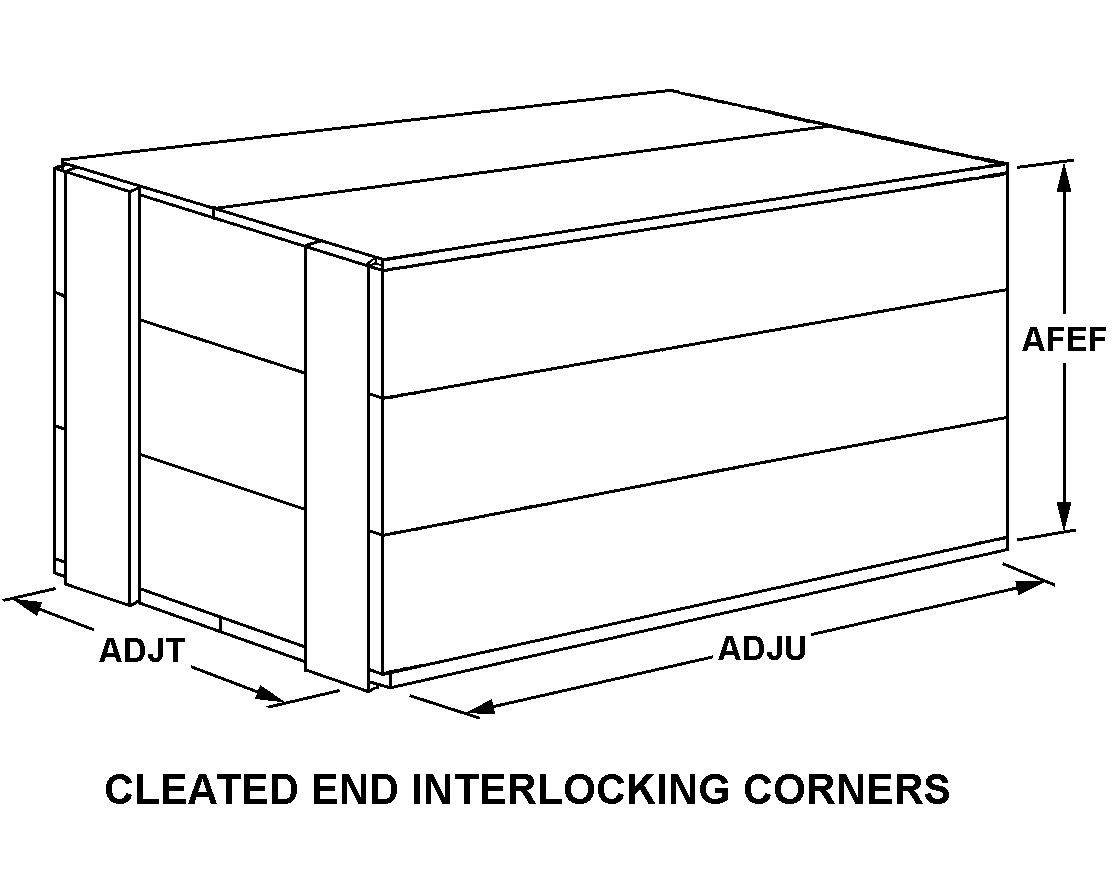8140001449905
Price Quote Get an up to date pricing and availability quote for this product. Order online or over the phone.
Quality Commitment
Serving our customers with quality and safety first.
- AS9120 Certified
- Audited supply chain
- ITAR Registered
- DDTC Registered
- HAZMAT Certified
- Customer service objectives
- Every product 100% inspected

8140-00-144-9905 Specification Set by the OEM (see RNCC code 3)
overseas
16.125in.
21.500in.
fixed external handles
13.000in.
SET-Up
nailed
hinged cover
hasp
metal straps
no
2.6 cubic feet
not rated
no
required
used for detonation simulator, explosive, model M80.
wood
wood
cleated end interlocking corners
Cross Reference Parts Part numbers that meet the specification outlined on this page and set by the OEM
Identification Item Identification Guide (IIG) and Item Name Code (INC)

Definition Definition of approved item name (AIN): "BOX,PACKING,AMMUNITION"
An expandable special-purpose box specifically designed for packing, storage and/or shipment of ammunition and ammunition components. It is designed to accommodate a specific type and size of ammunition or component in designated quantities and includes various liners, dividers, separators, inserts, and other packing materials. May be constructed of paperboard, fiberboard, or wood and may be used as an inner container. Excludes box (1), ammunition; crate, shipping and storage, ammunition; box (1), intermediate packing; box (1), setup; box (1), shipping; box (1), folding; and shipping and storage container (as modified).
Packaging & Dimensions Packaging instructions, special markings, and approx. weight/dims
Packaging Codes
OPI: Optional Procedure Indicator Code. A one position alpha code that indicates the allowable deviations from the prescribed requirements.
SPI No.: Special packaging instructions number.
LVL A/B/C: Indicates the type of shipping container required for level A, B, or C maximum packing protection.
SPC Mkg: A two position code that identifies the special markings applied to the container, which is part of the total pack to protect the contained item during preservation, packing, storage, transit and removal from the pack.
8140-00-144-9905 Material Hazmat, Precious Metals, Criticality, Enviroment, and ESD
Indicates there is no data in the hmirs and the nsn is in a fsc not generally suspected of containing hazardous materials.
Item does not contain precious metal.
Represents items with no adp components
The item does not have a nuclear hardened feature or any other critical feature such as tolerance, fit restriction or application.
Identification Codes
HMIC: Hazardous Material Indicator Code. A one position code that identifies a hazardous item.
PMIC: Precious Metal Indicator Code. A one position code which identifies items that have precious metals as part of their content. precious metals are those metals generally considered to be uncommon, highly valuable, and relatively superior in certain properties such as resistance to corrosion and electrical conductivity.
ESD: Electrostatic Discharge. Indicates if an item is susceptible to electrostatic discharge or electromagnetic interference damage. electrostatic discharge damage occurs when an accumulation of static electricity generated by the relative motion or separation of materials is released to another item by direct contact. electromagnetic interference damage occurs when an item comes into proximity with an electrostatic or magnetic field.
ENAC: Enviromental Attribute Code. Identifies items with environmentally preferred characteristics.
CRITL: Criticality Indicator Code. Indicates an item is technically critical by tolerance, fit, application, nuclear hardness properties, or other characteristics.






